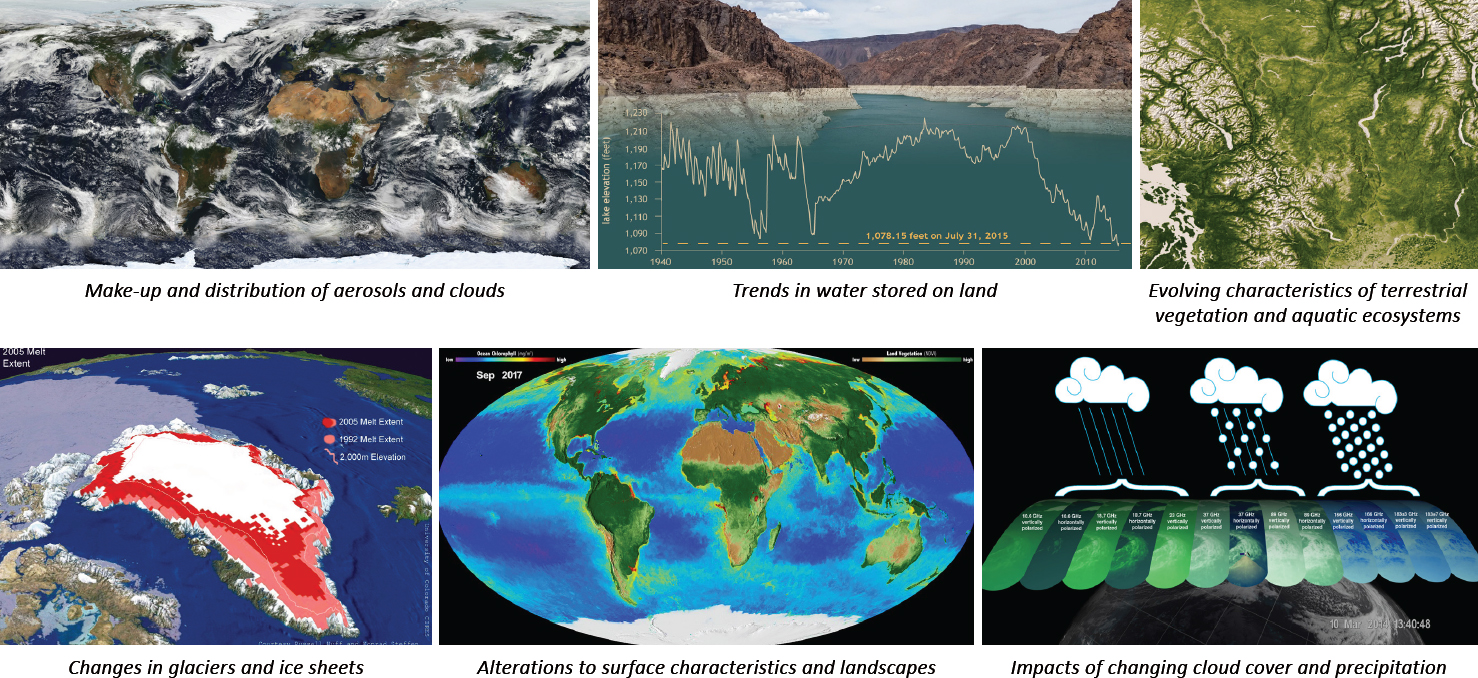THE RECOMMENDED PROGRAM FOR THE NEXT DECADE
Addressing the 2017 decadal survey’s priority science and applications questions starts with an ongoing commitment to the existing baseline program of operating and planned instruments and satellites. The recommended observing program builds from this, filling gaps in the program of record where observations are needed to address the key science and applications objectives for the coming decade. This observing program has five elements, which are detailed in the full report and its summary—the relevant excerpts of which are reprinted starting on Excerpts from the Report Summary for the convenience of interested readers.

Decisions regarding investments in needed Earth observation capabilities will determine our capacity during the next decade, and beyond, to predict Earth’s future changes, including the role of human actions, and to influence the extent to which those changes will impact society. As we recognize the interdependence and interconnections between human activities and our land, oceans, and atmosphere, there is an increasing need for reliable, science-based guidance to support policy and investment decisions related to fisheries management, river and water basin management, coastal construction, air quality, floods, hurricanes, droughts, changes in ecosystems, wildfires, sea-level rise, navigability of the Arctic, and adaptation to climate change—to name just a few.
Building on the success and discoveries of the past several decades, the 2017 decadal survey report recommends a balanced program that provides a pathway to realizing extraordinary scientific and societal benefits from space-based Earth observations. It ensures the United States will continue to be a visionary leader and partner in Earth observation over the coming decade, inspiring the next generation of Earth science and applications innovation and the people who make it possible.
The committee believes that meeting the challenge described above will motivate the scientific community to pioneer novel approaches in how it conducts its scientific research, with an emphasis on programmatic and technological innovation to accomplish more with less, with greater attention to the potential benefits of domestic and international partnerships along with the growing capability of commercial sources.

